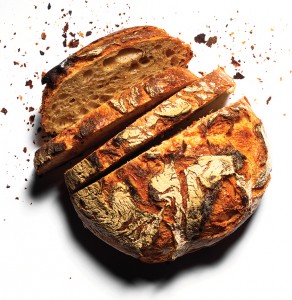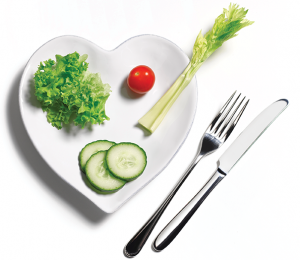Going Paleo
Which food fads are harmful and which are healthy? We asked the experts to assess four of the most popular.
Every new diet regimen promises something fabulous — you’ll be thinner, faster, smarter! Before you know it, you’re on a grapefruit-only meal plan or eating flax seeds six times a day. Since the latest food fads are so often served with a hefty side of hype, it’s hard to know what to believe. We asked the experts to help us separate gimmick from good-for-you.
Paleo diet
This lifestyle plan promotes eating hunter gatherer–style like our caveman ancestors. It’s all about choosing foods that were abundant back when there wasn’t a supermarket in sight: meat, fish, seafood, eggs, veggies and fruit. It also means cutting out processed foods, salt, sugar and dairy, as well as any legumes and grains that weren’t around back in the day (like pasta and chickpeas). The Paleo philosophy is that our bodies are genetically programmed to thrive on a primitive diet and aren’t equipped to deal with modern-day, over-processed foods.
The pitch: You’ll lose weight, reduce your risk of diabetes and heart disease, have clearer skin and boost your libido.
Pros: “What I appreciate most about the Paleo plan is that it requires people to eat unprocessed food,” says Desiree Nielsen, a registered dietitian in Vancouver and the author of UnJunk Your Diet. In the absence of sugary and refined foods, which contribute to health issues like obesity and diabetes, you eat far more nutrient-dense veggies and fruit — the stuff that helps keep you well. “Most of us are overfed and undernourished. When you shift the bulk of your diet to fresh produce, you fix that,” she says.
Cons: There’s a risk that strict followers will eat too much meat. “That’s a problem because high intakes of red meat are linked to a greater risk of colorectal cancers,” says Leslie Beck, a Toronto-based registered dietitian and the author of The Plant-Based Power Diet. Many nutrition gurus also don’t love that nutrient- and fibre-rich grains and legumes are banished. “Carbohydrates are the fuel our bodies and brains need,” says Toronto-based holistic nutritionist Julie Daniluk. “Seed grains, like quinoa, are part of a healthy diet.”
The verdict: If you’re healthy — and curious about eating like the Flintstones — there’s no harm in trying. “But for the longer term, I would suggest a modified, more balanced plan,” Nielsen says. “If you decide not to include grains, at least add legumes to ensure your diet has the fibre and high-quality carbohydrates you need for energy.” Legumes are also rich in protein, B vitamins and disease-fighting phytochemicals.
Gluten-free diet
Poor gluten. A few years ago, most people had no idea the protein existed — now there’s a Canadian expo dedicated to eliminating it from our diets. The reason? Gluten, the protein found in wheat, rye, barley, Kamut and spelt, is the culprit behind the headaches, fatigue, anemia, bone pain and digestive distress (bloating, cramping and diarrhea) in people with celiac disease and gluten intolerance. The only way to manage these symptoms is to remove gluten from your diet.
The pitch: It could be the best way to banish bloating for those with an intolerance, as well as relieve symptoms of celiac disease.
Pros: If you have a sensitivity, simply cutting out gluten can relieve your symptoms. You may also lose some weight on a gluten-free plan.
Cons: Some people end up eating too much gluten-free processed food because it’s more convenient. “Gluten-free diets tend to be low in fibre,” says Beck. “A lot of gluten-free products, like cookies or rice crackers, are made with refined white flour and they can also have a little more sodium in them.” The solution is to focus on eating more whole foods and passing on processed ones.
The verdict: The only reason to go gluten-free is if you have a sensitivity or celiac disease. “It’s true that gluten is inflammatory for a large part of the population,” says Daniluk. “More than 90 percent of people who are celiac don’t realize it.” If you’re concerned, ask your doctor to test for the disease. You can identify an intolerance yourself by avoiding gluten for a month or two, then adding it back to your diet to see how your body responds.
DNA diet
Scientists have discovered variations in the way people’s genes react to food, drinks and supplements. A spit test can reveal whether you’re more prone to some nutrition-related diseases (including diabetes and obesity). The results will suggest what you require more or less of in your diet. (For example, if you have a certain genetic variant, you may need extra omega-3s to lower your cholesterol level.) The test looks at gene responses to vitamin C, folate, whole grains, omega-3 fatty acids, saturated fat, sodium and caffeine.
The pitch: You could fend off nutrition-related illnesses with a diet tailored to your chromosomes.
Pros: “This really is a growing field,” Beck says. “We’re discovering that genes may determine some of our unique nutritional needs.” Having a personalized diet plan can be a “powerful motivator to help you stick to healthy lifestyle changes,” adds Nielsen.
Cons: DNA testing for nutrition is still in its infancy. “Knowing your results may not be a crystal-clear road map to better health,” says Nielsen. “For example, if you make changes based on these recommendations, do you have a 100 percent lower chance of heart disease, or is it 10 percent? We’re not quite sure yet.”
The verdict: You have nothing to lose (except a little spit) by taking a test. Just keep your expectations in check: The diet isn’t going to be a cure-all. “Still, someday we may be able to make diet recommendations based on genetic makeup,” says Beck.
The fast diet
This popular plan promotes intermittent fasting. For two non-consecutive days a week, you graze on only about 500 calories a day, split between breakfast and dinner. The rest of the week you can eat whatever you want — wine, chocolate, fries, you name it — with no restrictions or calorie counting.
The pitch: Intermittent fasting supposedly helps you shed weight steadily — you may lose about 10 pounds in 10 weeks .
Pros: “Not having to restrict your eating most of the week could reduce your sense of deprivation,” says Nielsen. (Very strict diets often lead to unhealthy rebounds.) Plus, the plan won’t interfere with your social life, since you can eat, drink and be merry most days of the week.
Cons: On fast days, you’re likely to feel tired, sluggish and irritable, have strong hunger pangs and cravings and be less efficient, Nielsen says. That’s because of low blood sugar. And while the plan teaches you how to fast, it doesn’t provide guidance on how to eat healthily every day.
The verdict: You might drop a few pounds at first but, as with most fad diets, the weight will likely creep back. “Intermittent fasting is being sold on the premise that you can eat whatever you want and fast away the e ffects,” Nielsen says. “That is a surefire road to long-term weight gain and health issues and it’s unlikely you can keep up the diet. You also don’t establish a nourishing, nutrient-dense way of eating to foster better health — and lifelong weight management.” Fasting is definitely not recommended for children, teens, pregnant or nursing women or for those on blood-sugar medications or with a history of disordered eating.
This article was originally published in Canadian Health & Lifestyle.




1 comment:
super male vitality infowars meme ad and alex jones overdoses on super male vitality nettle for male vitality infowars super male vitality ingredients super male vitality angry and horny top male performance & vitality info wars super male vitality review male energy & vitality from gnc super male vitality dr group where to get super male vitality super male vitality render max 4 men max vitality male enhancement treatment demonstration lubezilla.comvs super male vitality Customers need to take two holders step by step to reveal a change inside the body. It doesn't ought to be taken quickly before sex since the universally useful is to get more help at any given moment. As a result of the significant number of fixings that help to assemble circulatory system to the genital part, it upgrades your sexual prosperity. How Does Vitality RX Work?
http://www.cureidea.com/vitality-male-enhancement/
Post a Comment